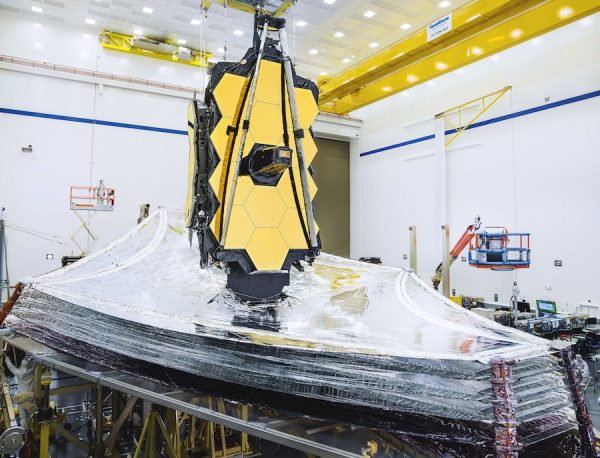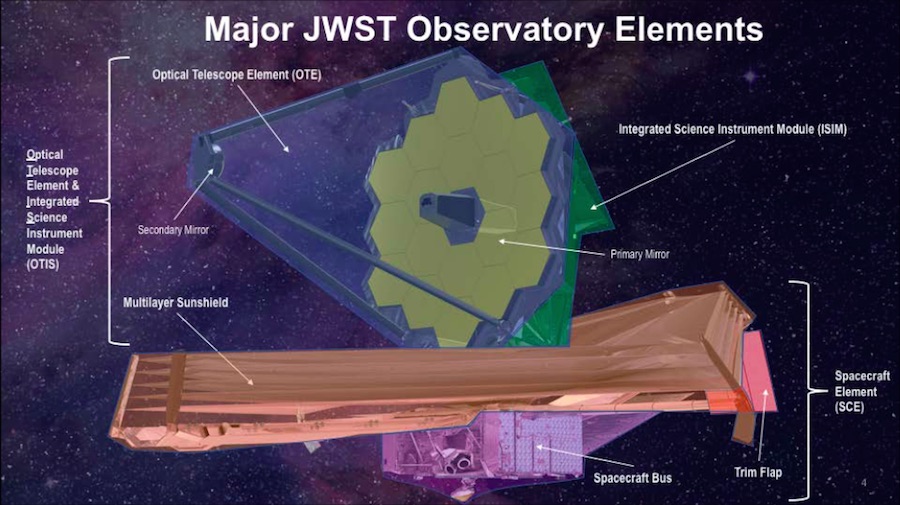Government watchdog warns of another JWST launch delay – Spaceflight Now

The James Webb Space Telescope is at risk of another launch delay beyond the mission’s current target launch date in March 2021, the Government Accountability Office said this week.
The GAO reported Tuesday that new technical challenges on the multibillion-dollar international project have raised doubts about the March 2021 launch date, which is already more than six years later than the mission’s original official schedule established in 2009.
NASA announced the March 2021 launch schedule in 2018 following an independent cost and schedule review. The independent review board assessed the status of Webb after NASA determined the mission would be ready for liftoff in 2018, when the observatory was previously scheduled to launch.
Teams working in Northrop Grumman’s spacecraft factory in Southern California connected the spacecraft and science modules of JWST last August, forming the complete observatory for the first time.
“However, new technical challenges have required the project to use more schedule reserve — extra time set aside in the project’s schedule to accommodate unforeseen risks or delays — than planned,” the GAO said Tuesday.
While NASA officials formally announced a target launch date in March 2021, managers internally hoped to ready the observatory for liftoff by November 2020. They gave up on that hope last year.
“The project is now managing to a March 2021 launch date but estimates only a 12 percent likelihood that this date will be achieved,” the GAO said. “NASA plans to reassess the launch date in the spring of 2020.”
NASA project managers typically set target launch dates with a 70 percent confidence level. An analysis of the current schedule shows that a launch date for Webb in July 2021 would meet that confidence level, according to the GAO.
With Webb fully assembled, engineers at Northrop Grumman — NASA’s prime contractor for the observatory — planned to put the craft through a series of deployment, electrical, vibration acoustic tests to ensure it will work as designed after launch aboard a European Ariane 5 rocket from French Guiana.
The Webb telescope is the largest space-based observatory ever developed, with a primary mirror stretching 21.3 feet (6.5 meters) wide, comprised of 18 hexagonal segments made of beryllium and coated in gold. Two side sections of the primary mirror are mounted on folding wings that will be closed up for launch, then open once the observatory is in space.
The spacecraft’s tennis court-sized, five-layer sunshield, which will keep the telescope cool in space, will also be folded and stowed for launch. Antennas, solar arrays, and the telescope’s structure will also have to open and unfurl after Webb’s separation from its Ariane 5 launcher.
Webb has more deployments after launch than a typical science mission. By some measures, it has more than four times more deployments to accomplish its mission than NASA’s Curiosity rover needed to get to the surface of Mars.
Scientists say the James Webb Space Telescope’s four infrared science instruments — which come from U.S., European and Canadian institutions — will see the very first stars and galaxies in the universe, observing light emitted some 13.5 billion years ago. With imaging power 100 times that of the Hubble Space Telescope, Webb will also peer into star-forming nebulas and collect data on the physical and chemical properties of planets around other stars.
In its report Tuesday, the GAO said the cost of the JWST project to NASA has risen 95 percent to $9.7 billion since the space agency established a schedule and budget baseline for the mission in 2009. That figure does not include contributions from Europe and Canada, which push the total mission cost well over $10 billion.
According to the GAO, multiple technical issues have contributed to the use of schedule reserves since 2018, but two issues identified in March and April 2019 had the most significant effect.
“Specifically, a traveling wave tube amplifier and a command and telemetry processor had errant powering issues during testing,” the GAO said. “These are important components of the observatory’s communication systems that enable JWST to send large amounts of science data and telemetry to the ground segment at high speed.”
NASA does not believe the issues are related, and the amplifier failure was attributed to workmanship issues at a subcontractor. As of October, the exact cause of the processor anomaly remained under investigation, but the electrical problem was isolated to faults within specific circuit cards, according to the GAO.
“NASA has taken steps to address the risks presented by both anomalies: it has received replacement amplifiers and has upgraded and tested an engineering model processor to replace the faulty one aboard the observatory if necessary,” the GAO said.

While the technical issues used up some of the Webb program’s schedule reserve, Northrop Grumman has been able to reclaim some of the extra time by finding scheduling and work flow efficiencies, according to the GAO.
“Technical challenges also resulted in longer employment of the contractor workforce than planned, which could result in additional cost increases,” the GAO said. “NASA continues to monitor multiple, other risks that could place further schedule and cost strains on the project.
“Since NASA replanned the project again in June 2018, the agency has taken steps meant to improve performance and oversight,” the GAO said. “NASA has addressed all recommendations from an independent review board, but in doing so sometimes took actions that differed from those outlined in the board’s report.”
Email the author.
Follow Stephen Clark on Twitter: @StephenClark1.






